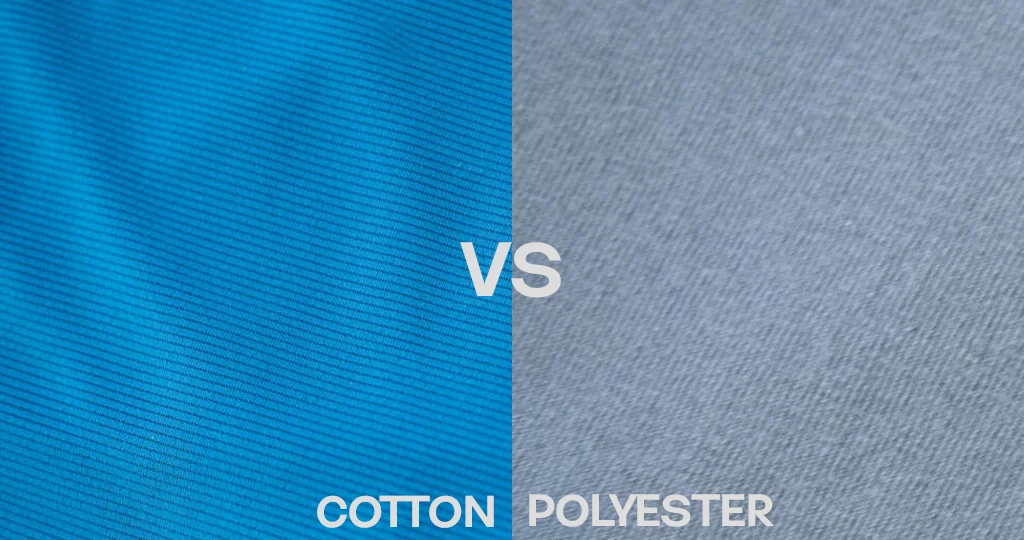My Business Name
Polyester vs Cotton Fabric in the Fashion Industry
 0
0
Posted: Sat June 08 5:54 AM PDT
Business: My Business Name
Tags: clothing, team uniforms
The Sustainable Textile Dilemma: Polyester vs Cotton in the Fashion Industry
In an era where the environmental footprint of our daily choices is under a magnifying glass, the textiles used in our clothing have become linchpins in the sustainability debate. Among the myriad of fabrics, polyester and cotton stand out as heavyweights in the fashion industry—but which is the better choice for our planet? This deep-dive post demystifies the complexity of the polyester-versus-cotton debate and offers insights for sustainable fashion aficionados, clothing businesses, and sportswear brands looking to make informed, eco-conscious decisions.
Introduction to Textile Sustainability
Sustainability can no longer be relegated to a vague corporate catchphrase; it must become the fabric of every industry, especially fashion. The “Polyester vs Cotton” debate, though often reduced to a slogan, is complex and multi-faceted. In this article, we dissect these two fibers’ production processes, environmental impacts, and consumer perceptions to provide a comprehensive understanding of their sustainability profiles.
Understanding the Basics: Polyester and Cotton Manufacturing
Polyester, a synthetic fiber derived from petrochemicals, has surged in popularity due to its versatility and affordability. In contrast, cotton, a natural fiber, remains a staple with its softness and breathability.
Polyester Production
- The majority of polyester production is a water-intensive and chemical-heavy process. It involves extracting crude oil or natural gas, which are then converted to monomers through polymerization. These polymers are spun into fibers, creating polyester textiles. The energy footprint is a significant factor, especially in terms of extracting and converting raw materials.
Cotton Production
- Despite being natural, conventional cotton farming is a notorious water-guzzler, often relying on irrigation and leading to soil degradation. Pesticide and herbicide usage is also widespread, with environmental implications for land preservation and biodiversity.
Polyester’s Reputation Under Scrutiny
Polyester, often vilified for its association with the petrochemical industry, has made strides in reducing its environmental impact through technological advancements.
Misconceptions Deconstructed
- While polyester’s association with petro-chemicals is valid, the narrative around its environmental harm belies the progress in recycling post-consumer plastics, upcycling waste, and the development of bio-based alternatives. It’s not the material itself that’s the villain, but the production methods that are evolving.
Polyester’s Technological Advancements
- The concept of ‘recycled polyester’ has become an industry buzzword, as companies now spin fibers from post-consumer plastic bottles or industrial waste. Additionally, ‘bio-polyester’ made from renewable resources is on the rise, offering a potentially greener alternative.
Lifecycle Analysis: Polyester vs. Cotton
To truly weigh their sustainability, we need to look beyond production and compare the full lifecycle of polyester and cotton garments.
The Production Phase
- Polyester’s strong suit is its efficiency; it requires less water and energy to produce. If made from recycled materials, its carbon footprint can be significantly lower than traditional cotton.
The Usage Phase
- Cotton’s breathability and moisture absorption outshine polyester, making it a more comfortable option for many. However, polyester’s durability often leads to longevity in use, potentially balancing out the eco-scales.
The End-of-Life Phase
- Both fabrics contribute to the issue of textile waste, with cotton biodegrading but releasing methane in the process, and polyester, while non-biodegradable, having the potential for recycling indefinitely.
Consumer and Industry Responsibility in Fabric Choices
Sustainability isn’t solely the responsibility of consumers or manufacturers—it’s a shared obligation.
The Power of Consumer Choice
- By opting for sustainable materials and investing in quality, long-lasting clothes, consumers can directly influence the market. Awareness around the environmental impact of textiles can empower individuals to align their purchasing power with their values.
Brand Practices and Innovation
- Clothing manufacturers are pivotal, with the power to innovate, adopt sustainable practices, and educate consumers. This includes transparency in the supply chain, from sourcing raw materials to end-of-life solutions, and continual investment in eco-friendly technologies.
A Balanced Perspective on Textile Sustainability
The polyester-versus-cotton debate isn’t about crowning one material as an absolute sustainable champion. It’s about acknowledging the nuanced trade-offs, implementing best practices, and fostering collaborative solutions for a greener future.
Polyester’s Pros and Cons
- While polyester possesses inherent qualities that can be eco-beneficial, such as ease of recycling and potentially lower water and energy usage, it’s important to recognize that synthetic fibers will always carry a carbon footprint that natural fibers do not.
Cotton’s Environmental Footprint
- Conventional cotton farming methods present significant environmental challenges, but the rise of organic and recycled cotton offers hope for a cleaner, greener alternative that honors the earth’s resources.
Conclusion: Choosing the Right Fabric for a Sustainable Future
There is no easy solution when it comes to choosing between polyester and cotton. The key is to recognize that both materials have their pros and cons, and instead of labeling one as good or bad, we should focus on implementing sustainable practices for both. As consumers, we can make informed choices by understanding the full lifecycle of our clothing and supporting brands that prioritize sustainability. As an industry, we can continue to innovate and collaborate towards a greener future for fashion. Ultimately, the goal is not to eliminate certain materials but to find the most responsible ways to use them in creating a more sustainable world for all. So, it’s essential to keep educating ourselves and making conscious decisions as we move forward on this journey.
Comments
Please login above to comment.
All Posts ...
The Sustainable Textile Dilemma: Polyester vs Cotton in the Fashion Industry In an era where the environmental footprint of our daily choices is un...

